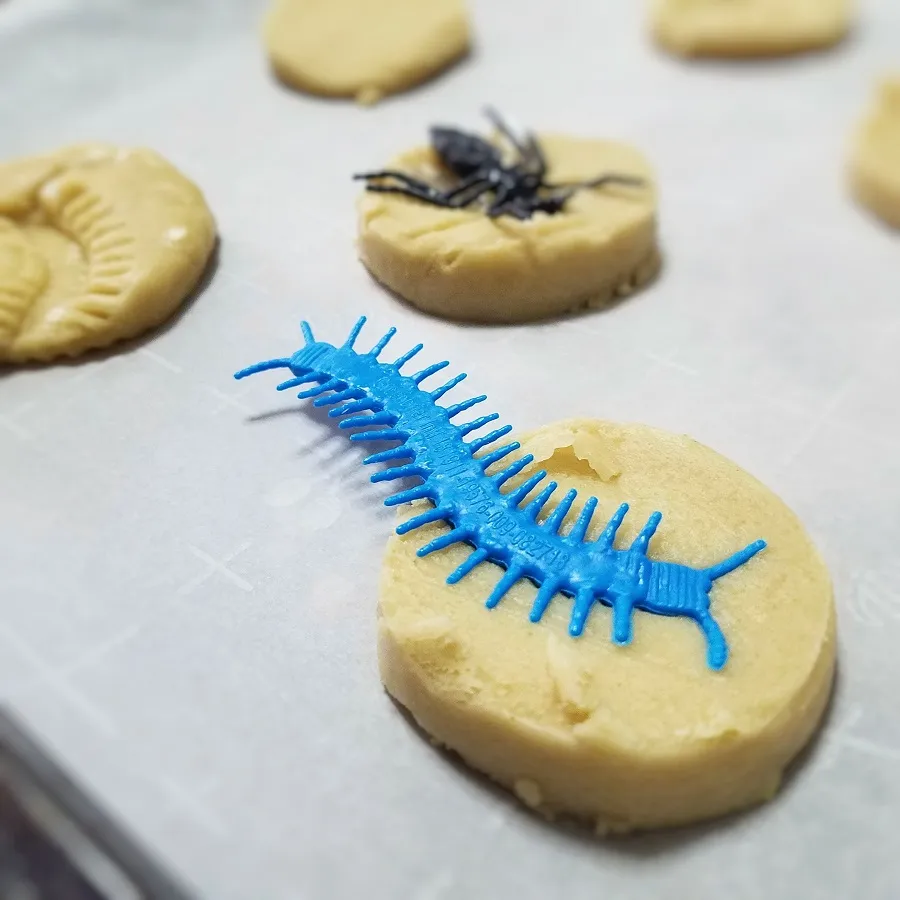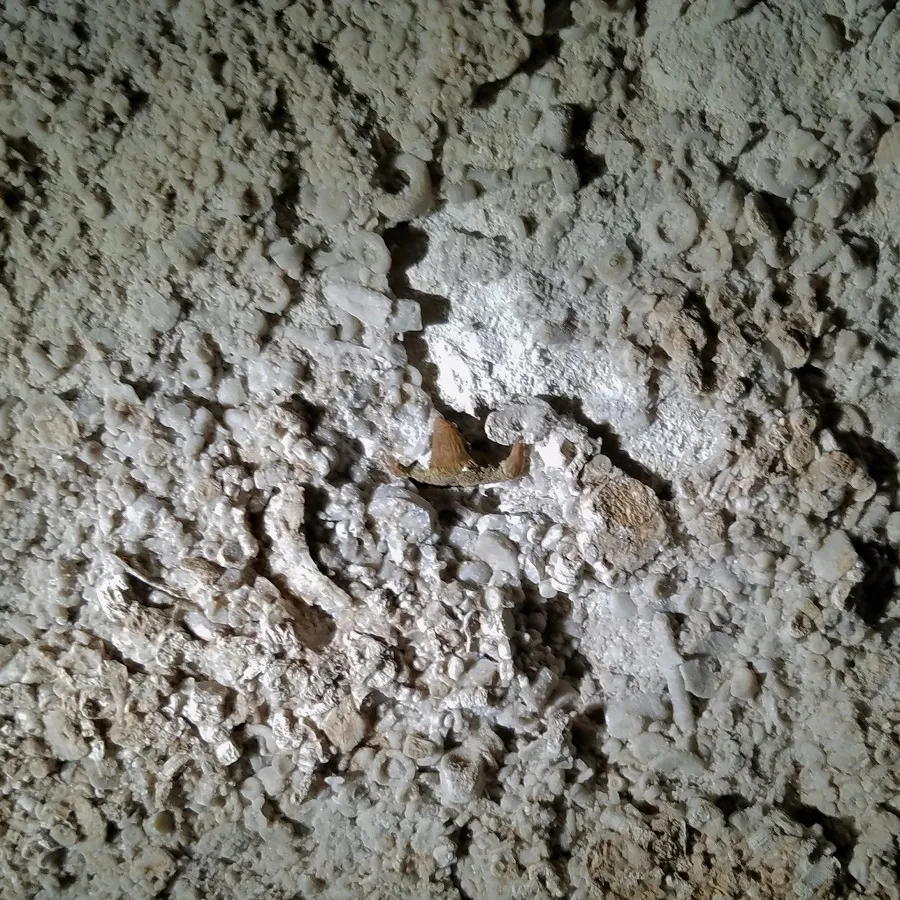Make Your Own Sugar Cookies that look like Limestone Fossils

You can find fossilized remains of ancient creatures within the limestone of Fantastic Caverns. Create your own limestone-inspired fossils in the form of sugar cookies.
Make your own sweet-treat fossils
Ingredients
- 2¾ cups all-purpose flour
- 1 teaspoon baking soda
- ½ teaspoon baking powder
- 1 cup butter, softened
- 1½ cups sugar
- 1egg
- 1 teaspoon vanilla
- Sanitized small plastic insects, toy marine animals and/or shells
Instructions
- Preheat the oven to 350°. Combine flour, baking soda, baking powder in a mixing bowl and set aside. In another mixing bowl, cream together butter and sugar until mixture is smooth. Beat in the egg and vanilla. Now, gradually blend in the dry ingredients.
- Thoroughly sanitize the items you plan to use to create your fossil imprints.
- Roll rounded teaspoonfuls of cookie dough into balls and then flatten slightly. Place on an ungreased cookie sheet and use the sanitized plastic insects, toy marine creatures and/or shells to make imprints on the cookie rounds. Bake for 8-10 minutes.
- The cookies will expand in the oven, and fall when cooling, but the subtle imprint should remain.

The process of elements and minerals combining to create rocks isn’t quite the same as combining ingredients to make sugar cookies.
Rocks are made up of minerals. There are three types of rock: sedimentary, metamorphic and igneous. Sedimentary rocks are formed by the accumulation and cementation of sediments. Metamorphic rocks are formed by heat, pressure or chemical processes (usually deep within the earth). Igneous rocks are formed by the cooling and solidification of molten magma or lava. Heat or pressure can further change the structure of rocks. For example, Limestone becomes marble when it is subjected to extreme pressure and/or extreme heat.

Limestone is common in the Ozarks, but how did it get here?
Rocks on the surface of the Earth slowly weather and break down (erode). As the rocks break down and get washed away by water, small pieces of stone are carried to lakes and oceans. The stone pieces come to rest on the bottom of the lake or sea, along with the bones and shells of creatures found in the water. All these pieces, bits of stone, bones and shells, are cemented or stuck together. Over time, the cemented pieces are compacted and hardened by the weight and pressure of up to thousands of feet of additional sediments above them. Eventually, all the cemented small pieces are lithified (turned into stone) and become solid sedimentary rock. You can still see the fossilized remains of creatures within the limestone.


About the Author

Director of Marketing
Hubert Heck is the Director of Marketing for Fantastic Caverns